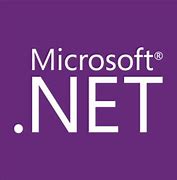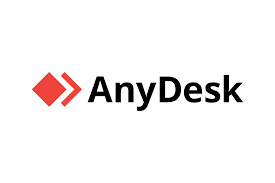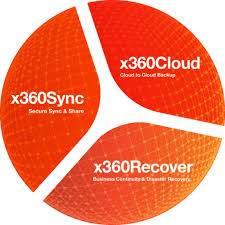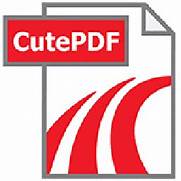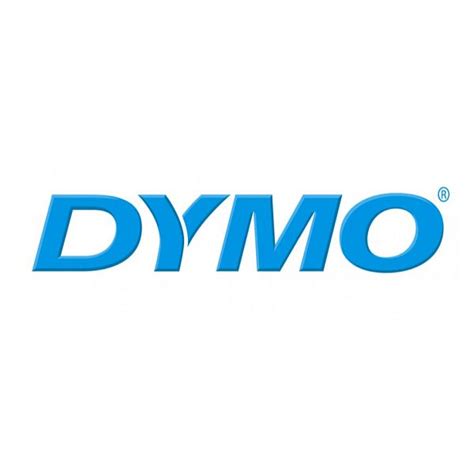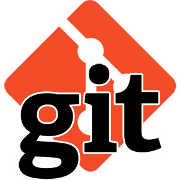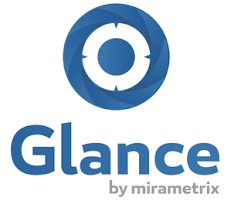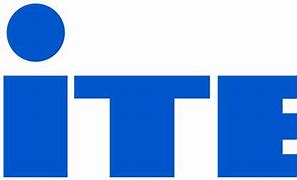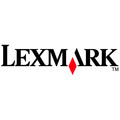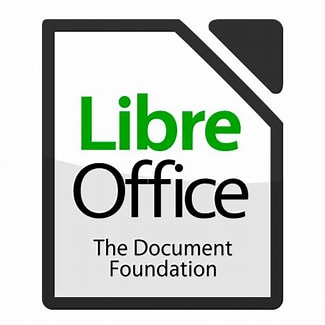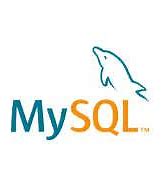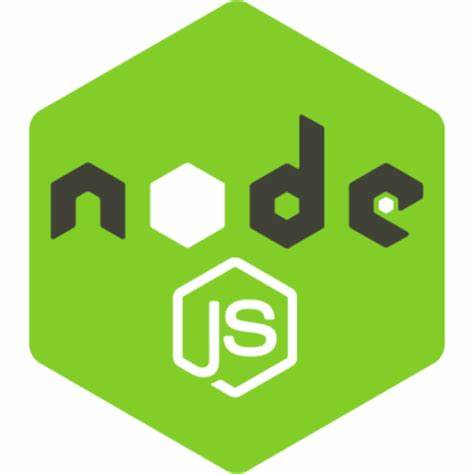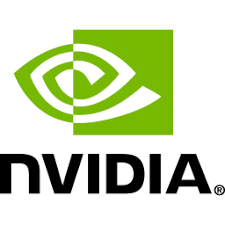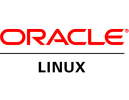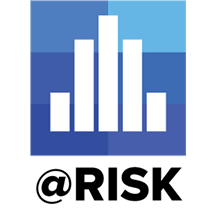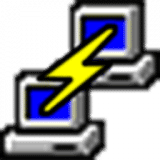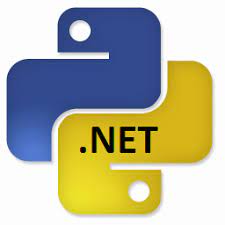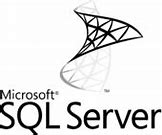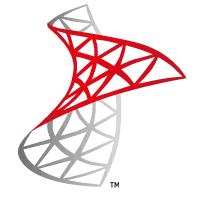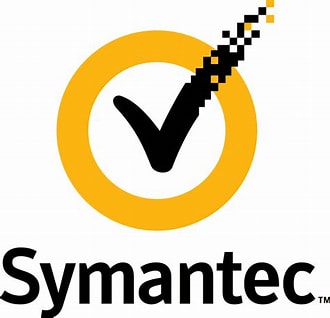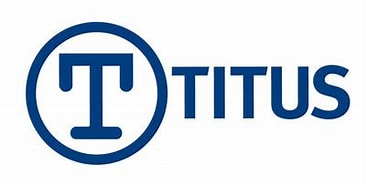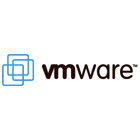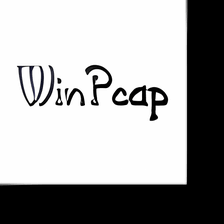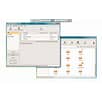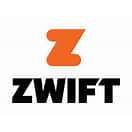Patching for Windows Mac Linux
CVE Vulnerabilities for FortiClient VPN
| CVE | Published | Severity | Details | Exploitability | Impact | Vector |
|---|---|---|---|---|---|---|
| CVE‑2025‑57741 | 2025‑10‑14 16:15:40 | HIGH (8) | An Incorrect Permission Assignment for Critical Resource vulnerability [CWE-732] in FortiClientMac 7.4.0 through 7.4.3, 7.2.0 through 7.2.11, 7.0 all versions may allow a local attacker to run arbitrary code or commands via LaunchDaemon hijacking. | 2 | 6 | LOCAL |
| CVE‑2025‑57716 | 2025‑10‑14 16:15:40 | MEDIUM (7) | An Uncontrolled Search Path Element vulnerability [CWE-427] in FortiClient Windows 7.4.0 through 7.4.3, 7.2.0 through 7.2.11, 7.0 all versions may allow a local low privileged user to perform a DLL hijacking attack via placing a malicious DLL to the FortiClient Online Installer installation folder. | 1 | 6 | LOCAL |
| CVE‑2025‑46774 | 2025‑10‑14 16:15:39 | HIGH (8) | An Improper Verification of Cryptographic Signature vulnerability [CWE-347] in FortiClient MacOS installer version 7.4.2 and below, version 7.2.9 and below, 7.0 all versions may allow a local user to escalate their privileges via FortiClient related executables. | 1 | 6 | LOCAL |
| CVE‑2025‑31365 | 2025‑10‑14 16:15:37 | MEDIUM (6) | An Improper Control of Generation of Code ('Code Injection') vulnerability [CWE-94] in FortiClientMac 7.4.0 through 7.4.3, 7.2.1 through 7.2.8 may allow an unauthenticated attacker to execute arbitrary code on the victim's host via tricking the user into visiting a malicious website. | 2 | 4 | NETWORK |
| CVE‑2025‑25251 | 2025‑05‑28 08:15:21 | HIGH (8) | An Incorrect Authorization vulnerability [CWE-863] in FortiClient Mac 7.4.0 through 7.4.2, 7.2.0 through 7.2.8, 7.0.0 through 7.0.14 may allow a local attacker to escalate privileges via crafted XPC messages. | 2 | 6 | LOCAL |
| CVE‑2025‑24473 | 2025‑05‑28 08:15:21 | LOW (4) | A exposure of sensitive system information to an unauthorized control sphere in Fortinet FortiClientWindows versions 7.2.0 through 7.2.1 may allow an unauthorized remote attacker to view application information via navigation to a hosted webpage, if Windows is configured to accept incoming connections to port 8053 (non-default setup) | 2 | 1 | NETWORK |
| CVE‑2024‑54019 | 2025‑06‑10 17:19:40 | MEDIUM (5) | A improper validation of certificate with host mismatch in Fortinet FortiClientWindows version 7.4.0, versions 7.2.0 through 7.2.6, and 7.0 all versions allow an unauthorized attacker to redirect VPN connections via DNS spoofing or another form of redirection. | 2 | 3 | NETWORK |
| CVE‑2024‑52968 | 2025‑02‑11 17:15:23 | MEDIUM (7) | An improper authentication in Fortinet FortiClientMac 7.0.11 through 7.2.4 allows attacker to gain improper access to MacOS via empty password. | 1 | 6 | LOCAL |
| CVE‑2024‑50570 | 2024‑12‑18 13:15:07 | MEDIUM (5) | A Cleartext Storage of Sensitive Information vulnerability [CWE-312] in FortiClientWindows 7.4.0 through 7.4.1, 7.2.0 through 7.2.6, 7.0.0 through 7.0.13 and FortiClientLinux 7.4.0 through 7.4.2, 7.2.0 through 7.2.7, 7.0.0 through 7.0.13 may permit a local authenticated user to retrieve VPN password via memory dump, due to JavaScript's garbage collector | 1 | 4 | LOCAL |
| CVE‑2024‑50564 | 2025‑01‑14 14:15:33 | LOW (3) | A use of hard-coded cryptographic key in Fortinet FortiClientWindows version 7.4.0, 7.2.x all versions, 7.0.x all versions, and 6.4.x all versions may allow a low-privileged user to decrypt interprocess communication via monitoring named piped. | 2 | 1 | LOCAL |
| CVE‑2024‑47574 | 2024‑11‑13 12:15:16 | HIGH (8) | A authentication bypass using an alternate path or channel in Fortinet FortiClientWindows version 7.4.0, versions 7.2.4 through 7.2.0, versions 7.0.12 through 7.0.0, and 6.4.10 through 6.4.0 allows low privilege attacker to execute arbitrary code with high privilege via spoofed named pipe messages. | 2 | 6 | LOCAL |
| CVE‑2024‑40592 | 2024‑11‑12 19:15:11 | HIGH (8) | An improper verification of cryptographic signature vulnerability [CWE-347] in FortiClient MacOS version 7.4.0, version 7.2.4 and below, version 7.0.10 and below, version 6.4.10 and below may allow a local authenticated attacker to swap the installer with a malicious package via a race condition during the installation process. | 1 | 6 | LOCAL |
| CVE‑2024‑40586 | 2025‑02‑11 17:15:23 | MEDIUM (7) | An Improper Access Control vulnerability [CWE-284] in FortiClient Windows version 7.4.0, version 7.2.6 and below, version 7.0.13 and below may allow a local user to escalate his privileges via FortiSSLVPNd service pipe. | 1 | 6 | LOCAL |
| CVE‑2024‑36513 | 2024‑11‑12 19:15:11 | HIGH (8) | A privilege context switching error vulnerability [CWE-270] in FortiClient Windows version 7.2.4 and below, version 7.0.12 and below, 6.4 all versions may allow an authenticated user to escalate their privileges via lua auto patch scripts. | 2 | 6 | LOCAL |
| CVE‑2024‑36507 | 2024‑11‑12 19:15:10 | HIGH (7) | A untrusted search path in Fortinet FortiClientWindows versions 7.4.0, versions 7.2.4 through 7.2.0, versions 7.0.12 through 7.0.0 allows an attacker to run arbitrary code via DLL hijacking and social engineering. | 1 | 6 | LOCAL |
| CVE‑2024‑35282 | 2024‑09‑10 15:15:16 | MEDIUM (4) | A cleartext storage of sensitive information in memory vulnerability [CWE-316] affecting FortiClient VPN iOS 7.2 all versions, 7.0 all versions, 6.4 all versions, 6.2 all versions, 6.0 all versions may allow an unauthenticated attacker that has physical access to a jailbroken device to obtain cleartext passwords via keychain dump. | 1 | 4 | PHYSICAL |
| CVE‑2024‑31492 | 2024‑04‑10 13:51:39 | HIGH (8) | An external control of file name or path vulnerability [CWE-73] in FortiClientMac version 7.2.3 and below, version 7.0.10 and below installer may allow a local attacker to execute arbitrary code or commands via writing a malicious configuration file in /tmp before starting the installation process. | 2 | 6 | LOCAL |
| CVE‑2024‑31489 | 2024‑09‑10 15:15:16 | HIGH (8) | AAn improper certificate validation vulnerability [CWE-295] in FortiClientWindows 7.2.0 through 7.2.2, 7.0.0 through 7.0.11, FortiClientLinux 7.2.0, 7.0.0 through 7.0.11 and FortiClientMac 7.0.0 through 7.0.11, 7.2.0 through 7.2.4 may allow a remote and unauthenticated attacker to perform a Man-in-the-Middle attack on the communication channel between the FortiGate and the FortiClient during the ZTNA tunnel creation | 2 | 6 | NETWORK |
| CVE‑2023‑45590 | 2024‑04‑09 15:15:28 | CRITICAL (10) | An improper control of generation of code ('code injection') in Fortinet FortiClientLinux version 7.2.0, 7.0.6 through 7.0.10 and 7.0.3 through 7.0.4 allows attacker to execute unauthorized code or commands via tricking a FortiClientLinux user into visiting a malicious website | 3 | 6 | NETWORK |
| CVE‑2023‑45588 | 2025‑03‑14 16:15:28 | HIGH (8) | An external control of file name or path vulnerability [CWE-73] in FortiClientMac version 7.2.3 and below, version 7.0.10 and below installer may allow a local attacker to execute arbitrary code or commands via writing a malicious configuration file in /tmp before starting the installation process. | 2 | 6 | LOCAL |
| CVE‑2023‑41840 | 2023‑11‑14 18:15:53 | HIGH (8) | A untrusted search path vulnerability in Fortinet FortiClientWindows 7.0.9 allows an attacker to perform a DLL Hijack attack via a malicious OpenSSL engine library in the search path. | 2 | 6 | LOCAL |
| CVE‑2023‑37939 | 2023‑10‑10 17:15:12 | LOW (3) | An exposure of sensitive information to an unauthorized actor vulnerability [CWE-200] in FortiClient for Windows 7.2.0, 7.0 all versions, 6.4 all versions, 6.2 all versions, Linux 7.2.0, 7.0 all versions, 6.4 all versions, 6.2 all versions and Mac 7.2.0 through 7.2.1, 7.0 all versions, 6.4 all versions, 6.2 all versions, may allow a local authenticated attacker with no Administrative privileges to retrieve the list of files or folders excluded from malware scanning. | 2 | 1 | LOCAL |
| CVE‑2023‑33304 | 2023‑11‑14 18:15:30 | MEDIUM (4) | A use of hard-coded credentials vulnerability in Fortinet FortiClient Windows 7.0.0 - 7.0.9 and 7.2.0 - 7.2.1 allows an attacker to bypass system protections via the use of static credentials. | 1 | 4 | LOCAL |
| CVE‑2023‑22635 | 2023‑04‑11 17:15:08 | HIGH (7) | A download of code without Integrity check vulnerability [CWE-494] in FortiClientMac version 7.0.0 through 7.0.7, 6.4 all versions, 6.2 all versions, 6.0 all versions, 5.6 all versions, 5.4 all versions, 5.2 all versions, 5.0 all versions and 4.0 all versions may allow a local attacker to escalate their privileges via modifying the installer upon upgrade. | 2 | 6 | LOCAL |
| CVE‑2022‑45856 | 2024‑09‑10 15:15:14 | MEDIUM (5) | An improper certificate validation vulnerability [CWE-295] in FortiClientWindows 6.4 all versions, 7.0.0 through 7.0.7, FortiClientMac 6.4 all versions, 7.0 all versions, 7.2.0 through 7.2.4, FortiClientLinux 6.4 all versions, 7.0 all versions, 7.2.0 through 7.2.4, FortiClientAndroid 6.4 all versions, 7.0 all versions, 7.2.0 and FortiClientiOS 5.6 all versions, 6.0.0 through 6.0.1, 7.0.0 through 7.0.6 SAML SSO feature may allow an unauthenticated attacker to man-in-the-middle the communication between the FortiClient and both the service provider and the identity provider. | 2 | 3 | NETWORK |
| CVE‑2022‑43946 | 2023‑04‑11 17:15:08 | HIGH (8) | Multiple vulnerabilities including an incorrect permission assignment for critical resource [CWE-732] vulnerability and a time-of-check time-of-use (TOCTOU) race condition [CWE-367] vulnerability in Fortinet FortiClientWindows before 7.0.7 allows attackers on the same file sharing network to execute commands via writing data into a windows pipe. | 2 | 6 | NETWORK |
| CVE‑2022‑42470 | 2023‑04‑11 17:15:08 | HIGH (8) | A relative path traversal vulnerability in Fortinet FortiClient (Windows) 7.0.0 - 7.0.7, 6.4.0 - 6.4.9, 6.2.0 - 6.2.9 and 6.0.0 - 6.0.10 allows an attacker to execute unauthorized code or commands via sending a crafted request to a specific named pipe. | 2 | 6 | LOCAL |
| CVE‑2022‑40682 | 2023‑04‑11 17:15:07 | HIGH (8) | A incorrect authorization in Fortinet FortiClient (Windows) 7.0.0 - 7.0.7, 6.4.0 - 6.4.9, 6.2.0 - 6.2.9 and 6.0.0 - 6.0.10 allows an attacker to execute unauthorized code or commands via sending a crafted request to a specific named pipe. | 2 | 6 | LOCAL |
| CVE‑2022‑40681 | 2023‑11‑14 19:15:13 | HIGH (7) | A incorrect authorization in Fortinet FortiClient (Windows) 7.0.0 - 7.0.7, 6.4.0 - 6.4.9, 6.2.0 - 6.2.9 and 6.0.0 - 6.0.10 allows an attacker to cause denial of service via sending a crafted request to a specific named pipe. | 2 | 5 | LOCAL |
| CVE‑2022‑33878 | 2022‑11‑02 12:15:53 | MEDIUM (6) | An exposure of sensitive information to an unauthorized actor vulnerabiltiy [CWE-200] in FortiClient for Mac versions 7.0.0 through 7.0.5 may allow a local authenticated attacker to obtain the SSL-VPN password in cleartext via running a logstream for the FortiTray process in the terminal. | 2 | 4 | LOCAL |
| CVE‑2022‑33877 | 2023‑06‑13 09:15:14 | MEDIUM (6) | An incorrect default permission [CWE-276] vulnerability in FortiClient (Windows) versions 7.0.0 through 7.0.6 and 6.4.0 through 6.4.8 and FortiConverter (Windows) versions 6.2.0 through 6.2.1, 7.0.0 and all versions of 6.0.0 may allow a local authenticated attacker to tamper with files in the installation folder, if FortiClient or FortiConverter is installed in an insecure folder. | 2 | 4 | LOCAL |
| CVE‑2022‑26113 | 2022‑07‑19 14:15:08 | HIGH (8) | An execution with unnecessary privileges vulnerability [CWE-250] in FortiClientWindows 7.0.0 through 7.0.3, 6.4.0 through 6.4.7, 6.2.0 through 6.2.9, 6.0.0 through 6.0.10 may allow a local attacker to perform an arbitrary file write on the system. | 3 | 5 | LOCAL |
| CVE‑2021‑44169 | 2022‑04‑06 10:15:08 | HIGH (8) | A improper initialization in Fortinet FortiClient (Windows) version 6.0.10 and below, version 6.2.9 and below, version 6.4.7 and below, version 7.0.3 and below allows attacker to gain administrative privileges via placing a malicious executable inside the FortiClient installer's directory. | 2 | 6 | LOCAL |
| CVE‑2021‑44167 | 2022‑05‑11 15:15:09 | HIGH (8) | An incorrect permission assignment for critical resource vulnerability [CWE-732] in FortiClient for Linux version 6.0.8 and below, 6.2.9 and below, 6.4.7 and below, 7.0.2 and below may allow an unauthenticated attacker to access sensitive information in log files and directories via symbolic links. | 4 | 4 | NETWORK |
| CVE‑2021‑43205 | 2022‑04‑06 10:15:08 | MEDIUM (5) | An exposure of sensitive information to an unauthorized actor vulnerability [CWE-200] in FortiClient for Linux version 7.0.2 and below, 6.4.7 and below and 6.2.9 and below may allow an unauthenticated attacker to access the confighandler webserver via external binaries. | 4 | 1 | NETWORK |
| CVE‑2021‑43204 | 2021‑12‑09 09:15:07 | MEDIUM (4) | A improper control of a resource through its lifetime in Fortinet FortiClientWindows version 6.4.1 and 6.4.0, version 6.2.9 and below, version 6.0.10 and below allows attacker to cause a complete denial of service of its components via changes of directory access permissions. | 1 | 4 | LOCAL |
| CVE‑2021‑43066 | 2022‑05‑11 16:15:09 | HIGH (8) | A external control of file name or path in Fortinet FortiClientWindows version 7.0.2 and below, version 6.4.6 and below, version 6.2.9 and below, version 6.0.10 and below allows attacker to escalate privilege via the MSI installer. | 2 | 6 | LOCAL |
| CVE‑2021‑42754 | 2021‑11‑02 19:15:08 | LOW (3) | An improper control of generation of code vulnerability [CWE-94] in FortiClientMacOS versions 7.0.0 and below and 6.4.5 and below may allow an authenticated attacker to hijack the MacOS camera without the user permission via the malicious dylib file. | 2 | 1 | LOCAL |
| CVE‑2021‑41031 | 2022‑07‑18 18:15:09 | HIGH (8) | A relative path traversal vulnerability [CWE-23] in FortiClient for Windows versions 7.0.2 and prior, 6.4.6 and prior and 6.2.9 and below may allow a local unprivileged attacker to escalate their privileges to SYSTEM via the named pipe responsible for FortiESNAC service. | 2 | 6 | LOCAL |
| CVE‑2021‑41028 | 2021‑12‑16 19:15:08 | HIGH (8) | A combination of a use of hard-coded cryptographic key vulnerability [CWE-321] in FortiClientEMS 7.0.1 and below, 6.4.6 and below and an improper certificate validation vulnerability [CWE-297] in FortiClientWindows, FortiClientLinux and FortiClientMac 7.0.1 and below, 6.4.6 and below may allow an unauthenticated and network adjacent attacker to perform a man-in-the-middle attack between the EMS and the FCT via the telemetry protocol. | 2 | 6 | ADJACENT_NETWORK |
| CVE‑2021‑36183 | 2021‑11‑02 19:15:08 | HIGH (7) | An improper authorization vulnerability [CWE-285] in FortiClient for Windows versions 7.0.1 and below and 6.4.2 and below may allow a local unprivileged attacker to escalate their privileges to SYSTEM via the named pipe responsible for Forticlient updates. | 1 | 6 | LOCAL |
| CVE‑2021‑36167 | 2021‑12‑09 10:15:11 | MEDIUM (4) | An improper authorization vulnerabiltiy [CWE-285] in FortiClient Windows versions 7.0.0 and 6.4.6 and below and 6.2.8 and below may allow an unauthenticated attacker to bypass the webfilter control via modifying the session-id paramater. | 3 | 1 | LOCAL |
| CVE‑2021‑32592 | 2021‑12‑01 12:15:08 | HIGH (8) | An unsafe search path vulnerability in FortiClientWindows 7.0.0, 6.4.6 and below, 6.2.x, 6.0.x and FortiClientEMS 7.0.0, 6.4.6 and below, 6.2.x, 6.0.x may allow an attacker to perform a DLL Hijack attack on affected devices via a malicious OpenSSL engine library in the search path. | 2 | 6 | LOCAL |
| CVE‑2021‑26089 | 2021‑07‑12 13:15:08 | MEDIUM (7) | An improper symlink following in FortiClient for Mac 6.4.3 and below may allow an non-privileged user to execute arbitrary privileged shell commands during installation phase. | 1 | 6 | LOCAL |
| CVE‑2021‑22127 | 2022‑04‑06 16:15:08 | HIGH (7) | An improper input validation vulnerability in FortiClient for Linux 6.4.x before 6.4.3, FortiClient for Linux 6.2.x before 6.2.9 may allow an unauthenticated attacker to execute arbitrary code on the host operating system as root via tricking the user into connecting to a network with a malicious name. | 1 | 6 | ADJACENT_NETWORK |
| CVE‑2020‑9295 | 2025‑03‑17 14:15:17 | MEDIUM (5) | FortiOS 6.2 running AV engine version 6.00142 and below, FortiOS 6.4 running AV engine version 6.00144 and below and FortiClient 6.2 running AV engine version 6.00137 and below may not immediately detect certain types of malformed or non-standard RAR archives, potentially containing malicious files. Based on the samples provided, FortiClient will detect the malicious files upon trying extraction by real-time scanning and FortiGate will detect the malicious archive if Virus Outbreak Prevention is enabled. | 3 | 1 | NETWORK |
| CVE‑2020‑9291 | 2020‑06‑01 19:15:10 | MEDIUM (6) | An Insecure Temporary File vulnerability in FortiClient for Windows 6.2.1 and below may allow a local user to gain elevated privileges via exhausting the pool of temporary file names combined with a symbolic link attack. | 3 | 3 | ADJACENT_NETWORK |
| CVE‑2020‑9290 | 2020‑03‑15 22:15:15 | HIGH (8) | An Unsafe Search Path vulnerability in FortiClient for Windows online installer 6.2.3 and below may allow a local attacker with control over the directory in which FortiClientOnlineInstaller.exe and FortiClientVPNOnlineInstaller.exe resides to execute arbitrary code on the system via uploading malicious Filter Library DLL files in that directory. | 2 | 6 | LOCAL |
| CVE‑2020‑15934 | 2024‑12‑19 11:15:07 | HIGH (9) | An execution with unnecessary privileges vulnerability in the VCM engine of FortiClient for Linux versions 6.2.7 and below, version 6.4.0. may allow local users to elevate their privileges to root by creating a malicious script or program on the target machine. | 3 | 6 | ADJACENT_NETWORK |
| CVE‑2019‑6692 | 2019‑10‑24 14:15:12 | HIGH (8) | A malicious DLL preload vulnerability in Fortinet FortiClient for Windows 6.2.0 and below allows a privileged attacker to perform arbitrary code execution via forging that DLL. | 2 | 6 | LOCAL |
| CVE‑2019‑5589 | 2019‑05‑28 22:29:01 | HIGH (9) | An Unsafe Search Path vulnerability in FortiClient Online Installer (Windows version before 6.0.6) may allow an unauthenticated, remote attacker with control over the directory in which FortiClientOnlineInstaller.exe resides to execute arbitrary code on the system via uploading malicious .dll files in that directory. | 0 | 0 | NETWORK |
| CVE‑2019‑17658 | 2020‑03‑12 22:15:15 | CRITICAL (10) | An unquoted service path vulnerability in the FortiClient FortiTray component of FortiClientWindows v6.2.2 and prior allow an attacker to gain elevated privileges via the FortiClientConsole executable service path. | 4 | 6 | NETWORK |
| CVE‑2019‑17652 | 2020‑02‑06 16:15:12 | MEDIUM (7) | A stack buffer overflow vulnerability in FortiClient for Linux 6.2.1 and below may allow a user with low privilege to cause FortiClient processes running under root priviledge crashes via sending specially crafted "StartAvCustomScan" type IPC client requests to the fctsched process due the argv data not been well sanitized. | 3 | 4 | NETWORK |
| CVE‑2019‑17650 | 2019‑11‑21 16:15:13 | HIGH (8) | An Improper Neutralization of Special Elements used in a Command vulnerability in one of FortiClient for Mac OS root processes, may allow a local user of the system on which FortiClient is running to execute unauthorized code as root by bypassing a security check. | 2 | 6 | LOCAL |
| CVE‑2019‑16155 | 2020‑02‑07 15:15:12 | HIGH (7) | A privilege escalation vulnerability in FortiClient for Linux 6.2.1 and below may allow a user with low privilege to overwrite system files as root with arbitrary content through system backup file via specially crafted "BackupConfig" type IPC client requests to the fctsched process. Further more, FortiClient for Linux 6.2.2 and below allow low privilege user write the system backup file under root privilege through GUI thus can cause root system file overwrite. | 2 | 5 | LOCAL |
| CVE‑2019‑16152 | 2020‑02‑06 16:15:12 | MEDIUM (7) | A Denial of service (DoS) vulnerability in FortiClient for Linux 6.2.1 and below may allow an user with low privilege to cause FortiClient processes running under root privilege crashes via sending specially crafted IPC client requests to the fctsched process due the nanomsg not been correctly validated. | 3 | 4 | NETWORK |
| CVE‑2019‑16150 | 2020‑06‑04 13:15:11 | MEDIUM (6) | Use of a hard-coded cryptographic key to encrypt security sensitive data in local storage and configuration in FortiClient for Windows prior to 6.4.0 may allow an attacker with access to the local storage or the configuration backup file to decrypt the sensitive data via knowledge of the hard-coded key. | 2 | 4 | LOCAL |
| CVE‑2019‑15711 | 2020‑02‑06 16:15:12 | HIGH (8) | A privilege escalation vulnerability in FortiClient for Linux 6.2.1 and below may allow an user with low privilege to run system commands under root privilege via injecting specially crafted "ExportLogs" type IPC client requests to the fctsched process. | 2 | 6 | LOCAL |
| CVE‑2019‑15704 | 2019‑11‑21 15:15:14 | MEDIUM (6) | A clear text storage of sensitive information vulnerability in FortiClient for Mac may allow a local attacker to read sensitive information logged in the console window when the user connects to an SSL VPN Gateway. | 2 | 4 | LOCAL |
| CVE‑2018‑9195 | 2019‑11‑21 15:15:12 | MEDIUM (6) | Use of a hardcoded cryptographic key in the FortiGuard services communication protocol may allow a Man in the middle with knowledge of the key to eavesdrop on and modify information (URL/SPAM services in FortiOS 5.6, and URL/SPAM/AV services in FortiOS 6.0.; URL rating in FortiClient) sent and received from Fortiguard severs by decrypting these messages. Affected products include FortiClient for Windows 6.0.6 and below, FortiOS 6.0.7 and below, FortiClient for Mac OS 6.2.1 and below. | 2 | 4 | NETWORK |
| CVE‑2018‑9193 | 2019‑05‑30 17:29:00 | HIGH (8) | A researcher has disclosed several vulnerabilities against FortiClient for Windows version 6.0.5 and below, version 5.6.6, the combination of these vulnerabilities can turn into an exploit chain, which allows a user to gain system privileges on Microsoft Windows. | 2 | 6 | LOCAL |
| CVE‑2018‑9191 | 2019‑05‑30 17:29:00 | MEDIUM (5) | A local privilege escalation in Fortinet FortiClient for Windows 6.0.4 and earlier allows attackers to execute unauthorized code or commands via the named pipe responsible for Forticlient updates. | 0 | 0 | LOCAL |
| CVE‑2018‑9190 | 2019‑02‑08 19:29:00 | MEDIUM (5) | A null pointer dereference vulnerability in Fortinet FortiClientWindows 6.0.2 and earlier allows attacker to cause a denial of service via the NDIS miniport driver. | 0 | 0 | LOCAL |
| CVE‑2018‑13368 | 2019‑05‑30 17:29:00 | MEDIUM (5) | A local privilege escalation in Fortinet FortiClient for Windows 6.0.4 and earlier allows attacker to execute unauthorized code or commands via the command injection. | 0 | 0 | LOCAL |
| CVE‑2017‑7344 | 2017‑12‑14 18:29:00 | HIGH (8) | A privilege escalation in Fortinet FortiClient Windows 5.4.3 and earlier as well as 5.6.0 allows attacker to gain privilege via exploiting the Windows "security alert" dialog thereby popping up when the "VPN before logon" feature is enabled and an untrusted certificate chain. | 0 | 0 | NETWORK |
| CVE‑2017‑17543 | 2018‑04‑26 20:29:00 | MEDIUM (5) | Users' VPN authentication credentials are unsafely encrypted in Fortinet FortiClient for Windows 5.6.0 and below versions, FortiClient for Mac OSX 5.6.0 and below versions and FortiClient SSLVPN Client for Linux 4.4.2335 and below versions, due to the use of a static encryption key and weak encryption algorithms. | 0 | 0 | NETWORK |
| CVE‑2017‑14184 | 2017‑12‑15 21:29:00 | MEDIUM (4) | An Information Disclosure vulnerability in Fortinet FortiClient for Windows 5.6.0 and below versions, FortiClient for Mac OSX 5.6.0 and below versions and FortiClient SSLVPN Client for Linux 4.4.2334 and below versions allows regular users to see each other's VPN authentication credentials due to improperly secured storage locations. | 0 | 0 | NETWORK |
| CVE‑2016‑8493 | 2017‑06‑26 17:29:00 | HIGH (9) | In FortiClientWindows 5.4.1 and 5.4.2, an attacker may escalate privilege via a FortiClientNamedPipe vulnerability. | 0 | 0 | NETWORK |
| CVE‑2015‑7362 | 2016‑01‑08 19:59:05 | HIGH (7) | Fortinet FortiClient Linux SSLVPN before build 2313, when installed on Linux in a home directory that is world readable and executable, allows local users to gain privileges via the helper/subroc setuid program. | 0 | 0 | LOCAL |
| CVE‑2015‑5737 | 2015‑09‑03 14:59:08 | HIGH (7) | The (1) mdare64_48.sys, (2) mdare32_48.sys, (3) mdare32_52.sys, (4) mdare64_52.sys, and (5) Fortishield.sys drivers in Fortinet FortiClient before 5.2.4 do not properly restrict access to the API for management of processes and the Windows registry, which allows local users to obtain a privileged handle to a PID and possibly have unspecified other impact, as demonstrated by a 0x2220c8 ioctl call. | 0 | 0 | LOCAL |
| CVE‑2015‑5736 | 2015‑09‑03 14:59:07 | HIGH (7) | The Fortishield.sys driver in Fortinet FortiClient before 5.2.4 allows local users to execute arbitrary code with kernel privileges by setting the callback function in a (1) 0x220024 or (2) 0x220028 ioctl call. | 0 | 0 | LOCAL |
| CVE‑2015‑5735 | 2015‑09‑03 14:59:06 | HIGH (7) | The (1) mdare64_48.sys, (2) mdare32_48.sys, (3) mdare32_52.sys, and (4) mdare64_52.sys drivers in Fortinet FortiClient before 5.2.4 allow local users to write to arbitrary memory locations via a 0x226108 ioctl call. | 0 | 0 | LOCAL |
| CVE‑2015‑4077 | 2015‑09‑03 14:59:00 | LOW (2) | The (1) mdare64_48.sys, (2) mdare32_48.sys, (3) mdare32_52.sys, and (4) mdare64_52.sys drivers in Fortinet FortiClient before 5.2.4 allow local users to read arbitrary kernel memory via a 0x22608C ioctl call. | 0 | 0 | LOCAL |
| CVE‑2015‑1570 | 2015‑02‑10 20:59:05 | MEDIUM (4) | The Endpoint Control protocol implementation in Fortinet FortiClient 5.2.3.091 for Android and 5.2.028 for iOS does not validate certificates, which makes it easier for man-in-the-middle attackers to spoof servers via a crafted certificate. | 0 | 0 | NETWORK |
| CVE‑2015‑1569 | 2015‑02‑10 20:59:04 | MEDIUM (4) | Fortinet FortiClient 5.2.028 for iOS does not validate certificates, which makes it easier for man-in-the-middle attackers to spoof SSL VPN servers via a crafted certificate. | 0 | 0 | NETWORK |
| CVE‑2015‑1453 | 2015‑02‑02 16:59:06 | MEDIUM (5) | The qm class in Fortinet FortiClient 5.2.3.091 for Android uses a hardcoded encryption key of FoRtInEt!AnDrOiD, which makes it easier for attackers to obtain passwords and possibly other sensitive data by leveraging the key to decrypt data in the Shared Preferences. | 0 | 0 | NETWORK |
| CVE‑2013‑4669 | 2013‑06‑25 14:38:18 | MEDIUM (5) | FortiClient before 4.3.5.472 on Windows, before 4.0.3.134 on Mac OS X, and before 4.0 on Android; FortiClient Lite before 4.3.4.461 on Windows; FortiClient Lite 2.0 through 2.0.0223 on Android; and FortiClient SSL VPN before 4.0.2258 on Linux proceed with an SSL session after determining that the server's X.509 certificate is invalid, which allows man-in-the-middle attackers to obtain sensitive information by leveraging a password transmission that occurs before the user warning about the certificate problem. | 0 | 0 | NETWORK |
Deep Windows, Mac, and Linux OS patching
Stay out of the "Negligent MSP" label because Lavawall® covers:- 30-312 times as many applications as popular RMMs.
- "optional" Windows patches, including firmware and drivers
- Mac OS and application patches
- Linux Kernel, OS, and package patches for more distribution types than we want to admit exist
Windows Mac Linux
What applications does Lavawall® monitor?
Lavawall monitors patches for over 7,500 applications. This is a summary of the most popular applications.Click here for the full list.
Click the applications below for the current version and known vulnerabilities.
Logos are property of their respective trademark holders and are not affiliated with ThreeShield or Lavawall. We have not audited the security of most of the listed tools.
The above listing includes products that Lavawall® monitors through public information and/or proprietary statistical analysis.
Although we do have a partner relationship with some of the listed products and companies, they do not necessarily endorse Lavawall® or have integrations with our systems.
 Fortinet Technologies Inc
Fortinet Technologies Inc







